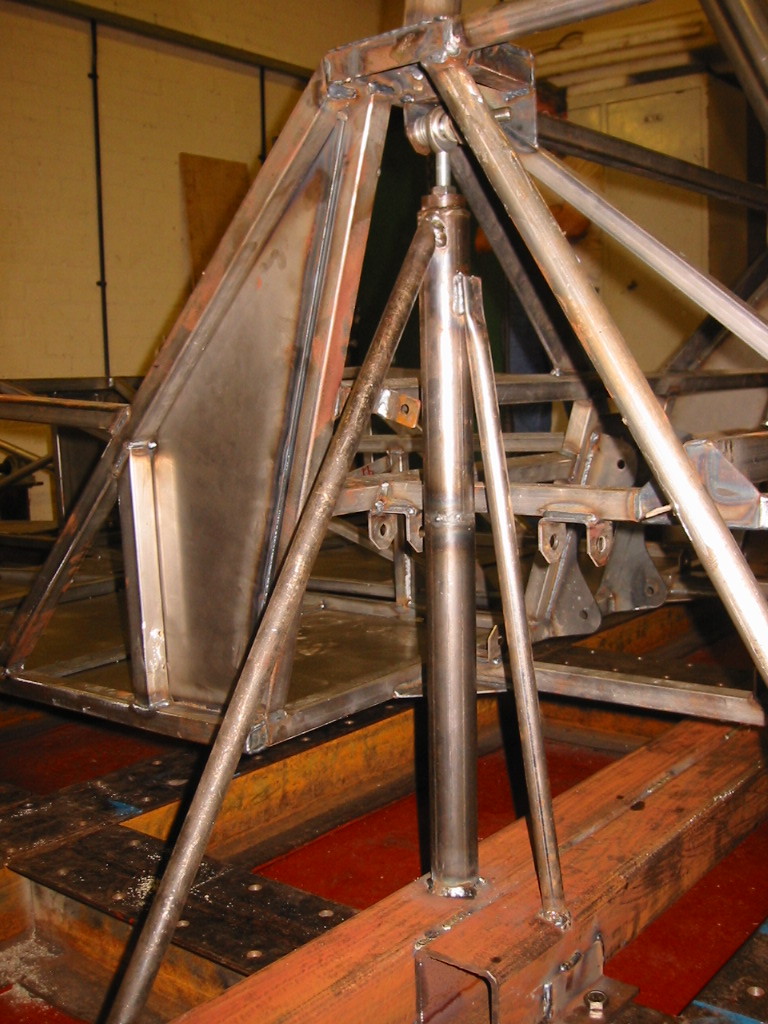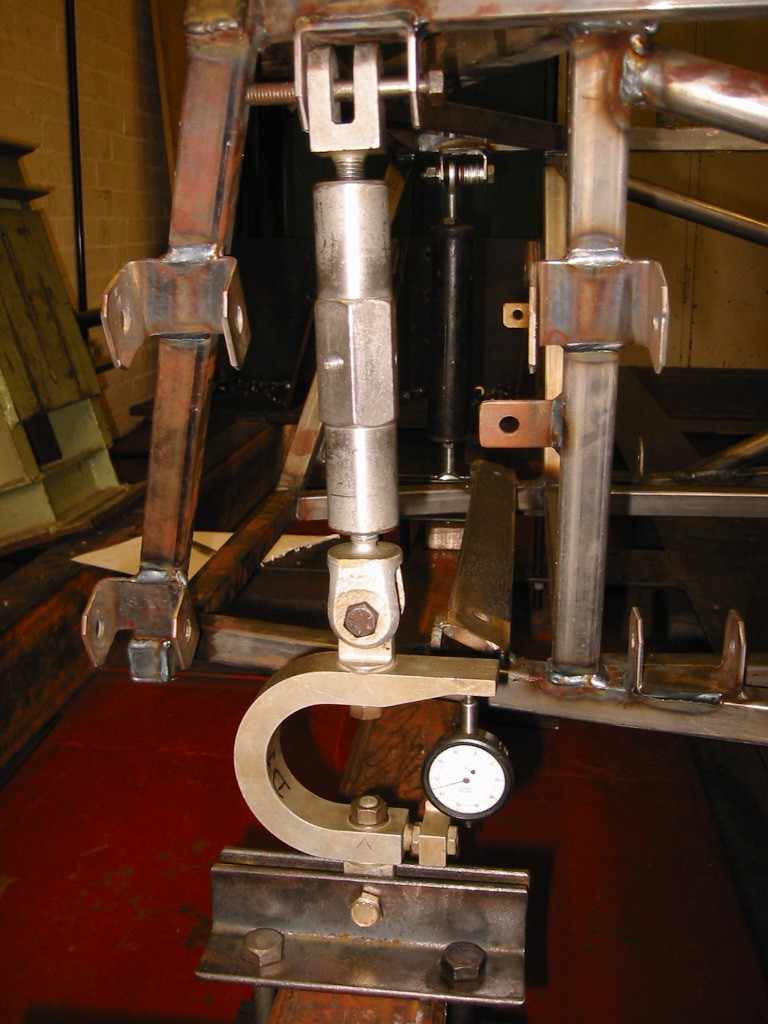
- •1 Introduction
- •1.1 Luego Sports Cars Ltd
- •1.2 Aims of Project
- •2 Definition of a Chassis and Required Properties
- •2.1 Definition of a Chassis
- •4 Calculation of the Global Torsional Stiffness
- •5 Description of Prototype Chassis
- •6 Physical Testing of the Chassis
- •Fe Modelling Description and Validation of Baseline Model
- •7.1 Fe Model
- •7.2 Patran/Nastran
- •7.2.1 Bar element
- •7.2.2 Shell element
- •7.3 Model correction
- •7 .4 Final Validation of Baseline Model
- •Design Improvement Study
- •8.1 Stage 1 – Discussed Modifications
- •8.1.3 Cross bracing of engine bay tubes
- •8.1.4 Addition of rear firewall
- •8.1.5 Addition of bar across dash area
- •8.1.6 Panelled dash bar and footwell tops
- •8.1.7 Addition of aluminium side panels to passenger compartment
- •8.1.8 Conversion of dash panel, transmission panels and rear wall to Aluminium
- •Addition of Aluminium panels to engine bay sides
- •Stage 2 - Application of structures theory to bare chassis
- •8 .2.1 Conversion of X-brace to w-brace on engine bay
- •8 .2.2 Addition of X-brace to front of engine bay
- •8.2.3 Addition of triangulation from top of footwell bulkhead to lower main rails
- •8.2.4 Addition of ‘Ring Beam’ to engine bay
- •8.2.5 Addition of ‘Ring Beam’ to lower engine bay
- •8.2.6 Addition of lower triangulation to the suspension box
- •8.2.11 Conversion of 8mm flat bar to 2” X 1” rhs
- •8.3 Stage 3-Identical Modifications to Fully Panelled Chassis
- •8.4 Stage 4-Optimisation Study
- •8.4.1 Conversion of 5mm thick bar to 2” X 1” rhs
- •8.4.2 Conversion of mild steel floor to aluminium
- •8 .4.3 Conversion of mild steel transmission tunnel panels to aluminium
- •Conversion of Transmission Tunnel Entrance Beams to 1” X 1” rhs
- •Conversion of Aluminium panels from 1.6mm to 1mm Thickness
- •8.5 Rollcage Study
- •9 Conclusions
- •9.1 Physical Testing
- •9.2 Creation of fe baseline model
- •9.3 Design Improvement Study
- •Discussed Modifications
- •9.3.2 Applications of Structures Theory to Bare Chassis
- •9.3.3 Inclusion of Design Improvements to Fully Panelled Chassis
- •Optimisation Study
- •References
6 Physical Testing of the Chassis
The chassis supplied by Luego was tested on a torsion rig to determine its torsional stiffness.
The suspension planned for the chassis is of the coil-spring over damper variety. This implies all loads will be applied through these mounting points. The coil-over mounts were therefore used for the constraints and load.
An object always has six equations of equilibrium, three force equations and three moment equations. In order to achieve a statically determinate system, six forces must then be applied. As can be seen in Fig.24 this was accomplished by restraining three of the coil over suspension mounts of the chassis and applying a load to the free suspension mount. If more than six restraints are employed the structure becomes statically indeterminate making the chassis appear stiffer than it is. The deflection was measured along the length of the chassis on both sides with dial test indicators and the global torsional stiffness calculated as described in chapter 4.

Fig. 24
Many torsion figures claimed by manufacturers for vehicles are arrived at while using torsion rigs with seven or more restraints causing the over constraint as described above, i.e. the chassis is fully restrained on both rear corners and at one front corner.
Fig. 25 shows the left rear restraint. The restraint is mounted to the chassis suspension mounting points with ball joints to prevent any moments being applied. The gaps between the ball joints and the suspension mounts are filled with spacers to prevent movement.

Fig.25
The load was measured with a Horseshoe Dynamometer as shown in Fig. 26 and applied with a turnbuckle. The chassis was preloaded with the turnbuckle before any load and deflection measurements were taken to take up any slack in the rig.

Fig. 26
Fig. 27 shows the deflection measurement points on the chassis.

Fig. 27 Dial Test Indicator measurement positions
1 – Front left suspension mount
2 – Front right suspension mount
3 – Left footwell bulkhead
4 – Right footwell bulkhead
5 – Left mid-passenger compartment
6 – Right mid-passenger compartment
7 – Left rear suspension mount
8 – Right rear suspension mount
From the measurements the Global torsional stiffness K = 1330 Nm/Deg
Fe Modelling Description and Validation of Baseline Model
7.1 Fe Model
To begin the Finite Element analysis a model of the chassis must be created. This was achieved using the universities Patran/Nastran FE modeller/solver software. It was decided to create a line model of the prototype chassis. This type of model is not a dimensionally or geometrically perfect copy of the prototype but a simple representation of it. This was chosen to facilitate relatively simple modification of the baseline model for the improvement study. The results are not intended to be 100% accurate but are intended to give an indication of the stiffness achievable and the effects each of the modifications has.
